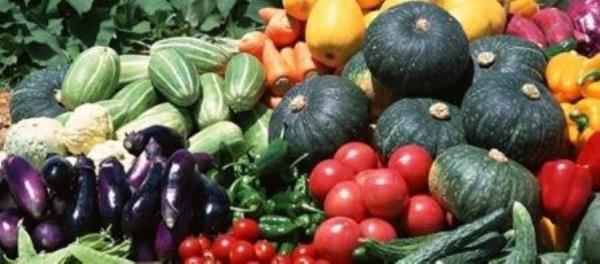
Nutrition Pyramid: Learn how to follow the food guide pyramid. It can help you lose your weight and be healthy.
Want to know more about nutrition?
Want to know what combination of food your body should be consuming regularly as part of a balanced diet?
Understand the Nutrition Pyramid or the Food Guide Pyramid!

Comprehending the Food Pyramid Information
The food guide pyramid above is an earlier version which has been existence for many years. It divides each food group into a certain number of servings depending on your calorie needs.
This is the new Food Guide Pyramid (called MyPyramid) introduced by the U.S. Department of Agriculture in 2005. They felt the new Pyramid would do a better job at telling Americans how to eat healthy.

The principles are the same except that it puts an emphasis on physical fitness – seen as the person climbing the Pyramid to the left. It also emphasizes on low fat and lean options as well as on whole grains.
What Does it Tell you?
The Nutrition Pyramid separates your food intake into six different food groups.
Grains
Bread, cereal, rice and pasta fall under this category. This group (carbohydrates) provides us with the majority of our energy requirements. The Pyramids requires you to focus on whole grains by eating at least 3 oz. of whole grains every day.
For a 2000 calorie diet you can eat 6 oz. of grains.
Vegetables
The Nutrition Pyramid wants you to have variety in the vegetables you eat. This is because vegetables provide us with a lot of vitamins and minerals. Make your vegetables colorful. Eat green, yellow, orange, and green vegetables.
For a 2000 calorie diet you should eat at least 2 1/2 cups of vegetables every day.
Fruits
Fruits are a great source of vitamins A and C and in minerals like potassium. They are also a great source of fiber. You should try and focus on fresh or frozen fruit. Juices lack fiber and can lose some its nutritional value. Stay away from fruits in syrup. Talk about sugar overload.
You should eat 2 cups a day for a 2000 calorie diet.
Dairy
Your bones can absorb calcium up into your early 30s, so you should always keep you calcium uptake going. It will help maintain your bone density and prevent osteoporosis. Foods like cheese, yogurt, milk and tofu are great sources for calcium and vitamin D. Try and make sure they are low fat as well.
If you are lactose intolerant, tofu might be a great option for you. You can also try yogurt with live cultures or taking a calcium supplement.
Three cups a day will keep your bones very happy.
Meats & Protein
This category includes beef, poultry, fish, beans, nuts and seeds. You should try to stick with lean protein and minimize intake of red meat. Stay away from frying and emphasize baking, broiling, or grilling.
5 1/2 oz a day is perfect for a 2000 calorie diet.
Remember a cup is about the size of a baseball or tennis ball and 3 oz of meat is about the size of the palm of your hand.
Strike Balance Between Food and Physical Activity
Know The Limits on Fats, Sugars, and Salt (Sodium)
Summary
Understanding and following the Nutrition Pyramid can help you to stay healthy and also keep your weight in check. It tells you what food your body should be consuming regularly as part of a balanced diet.









Leave a Reply